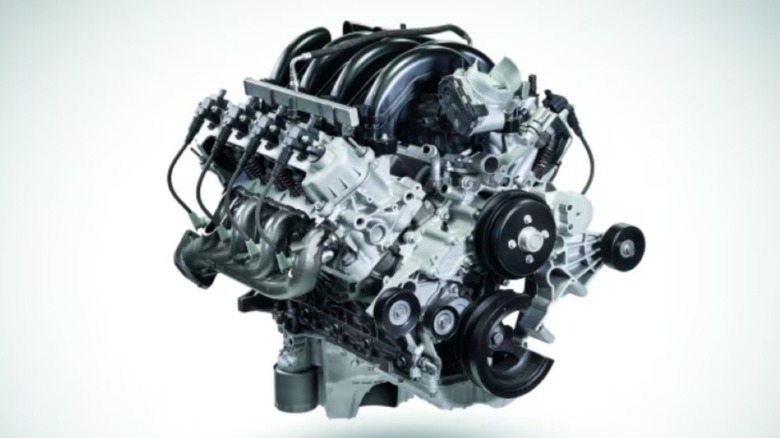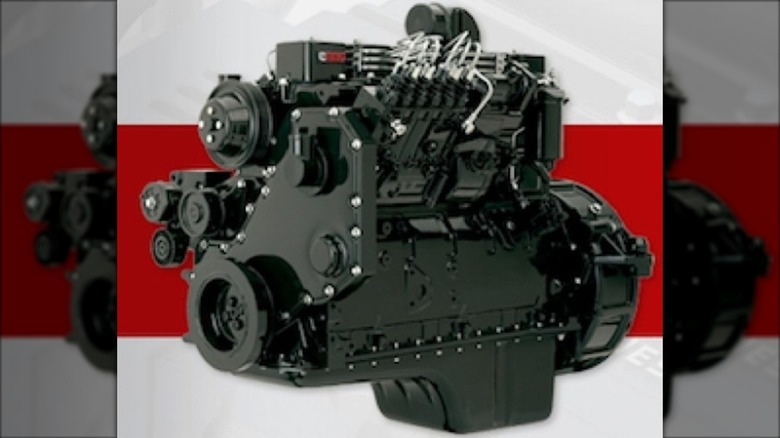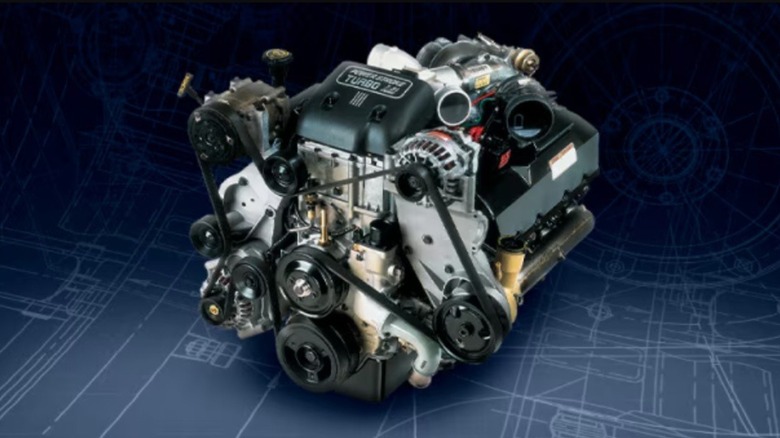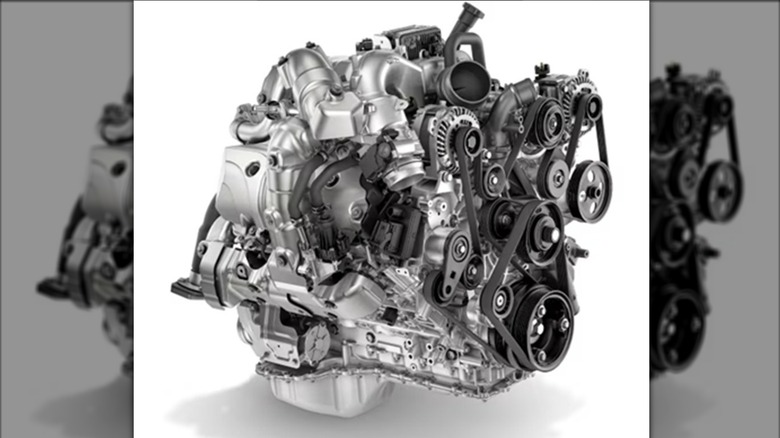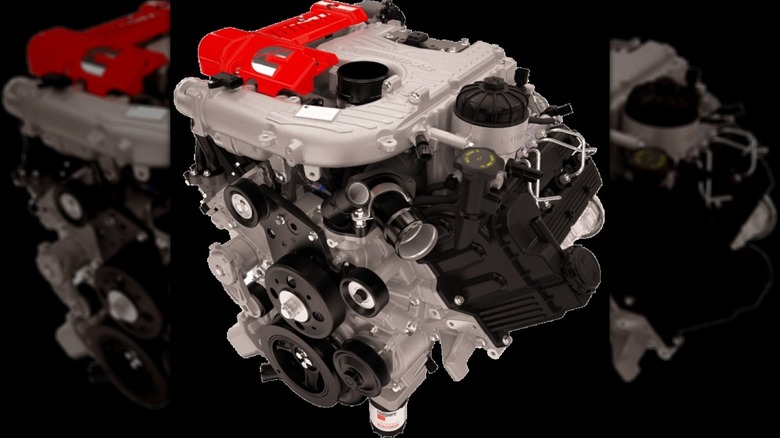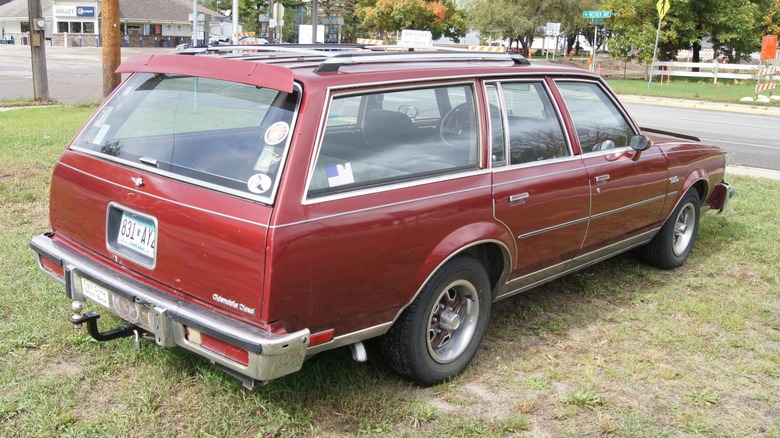3 Of The Best American Diesel Engines (And 2 Of The Worst)
It's long been said that discussions concerning religion and politics are best avoided at the dinner table or in polite company. The same holds for any topic that includes best muscle car, fastest motorcycle, or most capable pickup truck. While diesel engine fans might not resort to violence at the dining room table when someone disagrees with their ideal power plant, it's likely that a few of you will pen a strongly worded email to our editorial staff in support of your favorite engine if this doesn't go your way. Just for the record, the American diesel engines we'll discuss are widely considered the best (or worst) by multiple sources.
We took a look at more than just power output when picking these diesel engines. We've already reviewed the diesel engines with the most torque. Likewise, SlashGear staffers have produced lists of the most reliable diesel engines, as well as the best sounding diesel engines.
As for the best American diesel engines we'll discuss the 5.9L 6BT Cummins, the 6.6L LBZ Duramax, and the second-generation 7.3L Power Stroke. Oddly enough, a Cummins diesel engine also made the list as one of the worst with its 5.0-liter V8. The other bad diesel engine on our list, the 350-cubic inch (5.7-liter) Oldsmobile LF9 diesel, won't surprise anyone familiar with General Motors' diesel-powered full-size sedan/wagon debacle of the late 1970s to mid 1980s.
Cummins is the best American six cylinder diesel engine
Cummins produced the six cylinder 5.9-liter 6BT diesel engine from 1989 to 1998, some of the best years for Cummins diesel engines, primarily for use in Dodge pickup trucks. While it's arguably the best American six-cylinder diesel engine, many consider the Cummins 6BT to be the best diesel engine ever made. Its versatility has led to widespread use including buses, generators, and marine applications.
The Cummins 6BT evolved over its two generations. The first generation, from 1989 to 1993, saw the 12-valve 5.9L diesel engine powering Dodge D250 and D350 trucks with around 160 hp to the rear wheels. While that's not a lot of horsepower for a truck engine, even by 1989 standards, the first-gen Cummins 6BT pumped out an impressive 400 pound-feet (lb-ft) of peak torque. The second-gen 6BT Cummins, spanning the 1994 to mid-1998 model years, also had just two valves per cylinder. Improvements in the engine's fuel delivery system included a new fuel pump, the Bosch P7100, among other modifications increased the 6BT's power, topping out at 215 hp and 440 lb-ft of torque before being replaced by the 5.9-liter 24-valve ISB Cummins in the middle of the 1998 model year.
The most prominent failure point for the Cummins 6BT and the first-gen ISB 5.9-liter diesel engines is known as the Cummins Killer Dowel Pin. If you're a fairly adept DIY mechanic, the fix involves removing the timing gear cover from the front of the engine, it's an inexpensive, though labor intensive project.
Ford collaborated with Navistar to create possibly the best American diesel engine
Before the International Truck and Engine Corporation (ITEC) changed its name to Navistar International, Ford used a 7.3-liter diesel produced by ITEC that lacked the Power Stroke name and turbo. However, by mid-1994 Navistar began supplying Ford with one of the best diesel engines ever built, the 7.3L Power Stroke Turbo Diesel V8.
When the first-generation 7.3L Power Stroke was introduced it immediately jumped to the head of the class with around 210 hp and 425 lb-ft of torque. However, it's the 7.3's reliability that earns it praise among its faithful. Accounts of 7.3L Power Stroke's running strong with upwards of 350,000 to 400,000 miles on the odometer are common on internet forums and respectable sources such as MotorTrend.
While it's difficult to label any model year 7.3 Power Stroke as bad, most of the engine's fans find the improvements bestowed upon the second generation 7.3 made it superior to the first-gen engines. The second-gen engine was introduced in 1999 and continued powering F-Series pickups until Ford discontinued the 7.3 Power Stroke in 2003. By the end of the 7.3 Power Stroke's production horsepower had increased to 250 when paired with an automatic transmission or 275 with a manual. Torque values increased as well with values reaching 505 and 525 lb-ft for automatics and manuals.
The Duramax diesel engine from General Motors is one of the best
The 6.6L Duramax V8 diesel engine found in a variety of GM vehicles continues to be an example of the best American diesel engines. If you don't already know the history of the Duramax diesel you might be surprised to learn that it was born out of a collaboration between GM and Isuzu. It all started 2001 with the first 6.6L Duramax designated the LB7. The LB7 produced 300 hp and 520 lb-ft of torque, surpassing Ford's 7.3 Power Stroke and the 5.9L Cummins used by Chrysler by at least 50 horsepower and 15 lb-ft of torque.
The Duramax LLY came out midway through 2004 featuring new injectors and a variable geometry turbocharger. The upgrades combined to boost the LLY's horsepower to 310 and torque to 605 lb-ft. However, the greatest Duramax engine design is the LBZ, produced from 2006 into 2007 being replaced by the LMM in order for GM to comply with new emissions regulations being applied to diesel engines at the time. The Duramax LBZ is a much improved version of the LLY upon which the design is based. A stronger engine block casting, forged steel connecting rods, a higher pressure fuel-injection system, better fuel injectors, and a larger turbo inlet combined to produce 360 horsepower and 650 lb-ft of torque.
While the Duramax LBZ is highly regarded as the best Duramax ever, there are some things you should know about the GM 6.6-liter. The pistons used in the LBZ are the engine's Achilles Heel, especially when upgrading its power
The 5.0L Cummins V8 is one of the worst American diesel engines
Cummins and Nissan worked together for several years prior to the launch of the 5.0 Cummins V8-powered 2016 Nissan Titan XD. According to specs provided by Cummins, the 5.0L V8 turbo diesel was designed to fill the gap that existed between smaller and larger diesel engines used in pickup trucks.
The V8 Cummins was designed to be on par with the best Cummins had to offer. The DOHC 5.0 turbo diesel featured a compacted graphite iron (CGI) engine block, forged steel crankshaft, and aluminum alloy cylinder heads. The engine's "near-zero emissions," thanks to Cummins' advanced emissions technology, was one of its most promising characteristics. Unfortunately, the 5.0L Cummins V8 in the Nissan Titan had some common problems. One issue was that the DEF (Diesel Exhaust Fluid) pump, part of the Cummins Emission Solutions Aftertreatment System that promised low emissions, was prone to failure. It could leave the truck operating in "limp mode," shutting down features like air conditioning, and reducing power and speed.
In addition to the DEF pump, the emissions system also suffered from carbon buildup on the EGR (Exhaust Gas Recirculation) valve. Excessive carbon causes the valve to stick either open or closed, significantly impacting the engine's performance and efficiency. The EGR cooler tank was also prone to cracking and coolant leaks due to a manufacturing defect. In addition, the turbocharger could deliver metal shavings through the intake and into the engine due to inadequate lubrication. This led to the recall of some 12,000 2016 Nissan Titan XD pickups.
The Oldsmobile LF9 could be the worst American diesel ever
General Motors introduced the 350-cubic inch (5.7-liter) Oldsmobile LF9 V8, one of the most obscure diesel engines in automotive history, in 1977. While it was meant to reduce fuel consumption in some of the larger GM cars of the time, its initial offering of 120 horsepower fell to 105 horses as emission regulations tightened.
Unfortunately, Oldsmobile rushed the design, resulting in one of the worst engines ever put in a production vehicle. Using the automaker's existing 5.7L gasoline engine as a starting point for its diesel engine, only the minimum required components were changed to make the transition. The LF9 had upgraded pistons and a stronger crankshaft than the gas version, but even the crank was prone to failure. Other pain points were failed fuel injectors, stretched head bolts, blown head gaskets, excessively noisy operation, sooty black exhaust smoke, and lack of diesel-engine training for Oldsmobile technicians at service centers.
GM pulled the plug on the Oldsmobile LF9 in 1985, but the damage was already done. It would be decades before American car-buyers would consider a diesel engine in anything other than a pickup truck.
If you're wondering why we picked these American diesel engines
The three best American diesel engines were easy to pick as they are highly regarded as the best of the best by owners (according to posts on social sites) and experts alike. Likewise, the Oldsmobile LF9 was so bad that it killed the thought of diesel-powered American cars for decades and created an entire set of consumer protections that were unheard of prior to its spectacular flop. The 5.0L Cummins V8 had potential but was poorly executed by either Cummins, or by Nissan as it was designed for use in the Titan XD. Full disclosure: There are other bad diesel engines, but these were met with the most disappointment by consumers.
